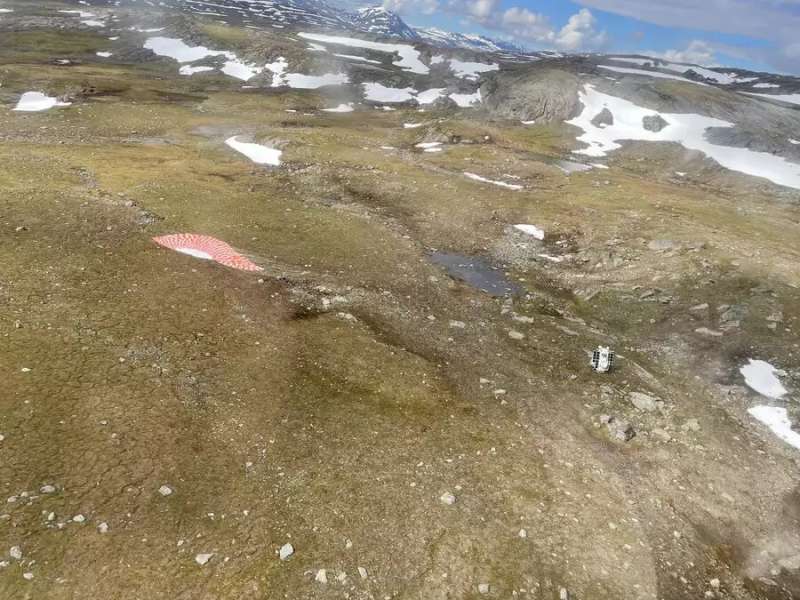Sunrise III found safe at landing site

Following the termination of the flight of the balloon-borne solar observatory Sunrise III on July 10, team members have reached the landing site and found the observatory's science payload largely intact. According to current information, the flight had to be ended a few hours after launch because the solar telescope it was carrying, the centerpiece of Sunrise III, could not be pointed at the sun. The cause for this is currently under investigation. All options are being examined for a launch of the observatory next year or later.
Since early April of this year, the international Sunrise III team had been preparing the six-meter-high solar observatory for its stratospheric flight at Esrange Space Center near the small northern Swedish town of Kiruna, not far from the Arctic Circle. Equipped with a telescope, three scientific instruments and an image stabilization system, Sunrise III is designed to collect observational data from a layer of the sun more than 2,000 kilometers thick, extending from just below its visible surface to the upper chromosphere. Due to current global logistics problems, the earliest possible launch date had initially been delayed by several weeks into June. After that, unsuitable weather postponed the start of the mission further. A first launch attempt on Saturday, July 9, had to be canceled due to the threat of rain.
In the early morning of July 10, Sunrise III was able to take advantage of the second launch opportunity: At 3:44 a.m. (CEST), the solar observatory lifted off. However, already at 9.05 a.m. (CEST) the flight had to be terminated. The telescope could not be pointed at the sun, making it impossible to obtain observational data.
The observatory landed safely on uninhabited Swedish territory not far from the border to Norway. The members of the Sunrise III team who have reached the landing site in the meantime could not detect any serious damage to the telescope as well as to the scientific instruments. The gondola also survived the landing well. "Sunrise III apparently came down safe and sound and standing upright," reports Sunrise III Principal Investigator Sami K. Solanki, director at the Max Planck Institute for Solar System Research in Göttingen (Germany).
In the coming weeks, the observatory will first be brought back to Esrange Space Center. From there, it could then make its way home to Göttingen, where more detailed investigations will take place. The team will then examine how and under what conditions Sunrise III can be launched again next year or later.
Provided by Max Planck Society





















